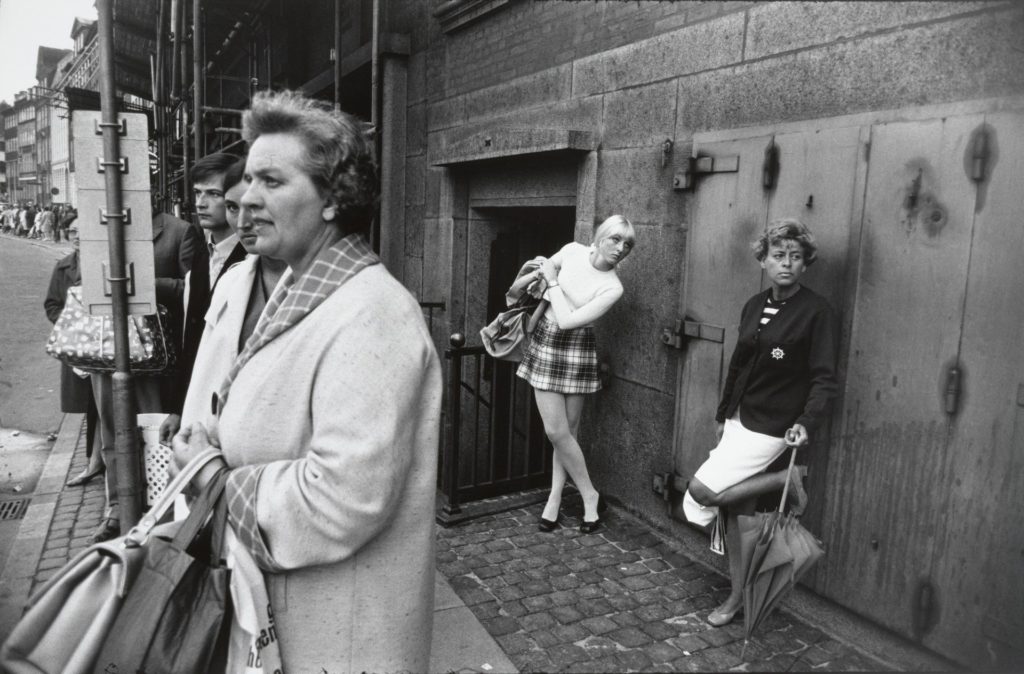Garry Winogrand
Garry Winogrand was born in 1928, he grew up in a Jewish, working-class neighbourhood of the Bronx in New York City. His parents immigrated to the United States from Hungary and Poland in the hopes of having a better life in the United States, but then the Great Depression hit the country a year after Winogrand was born. In 1949, he took a photography class at the New School, where his teacher, Alexey Brodovitch, who was the celebrated art director at Harper’s Bazaar at the time, taught him to rely on his instinct rather than classical photographic techniques when taking photos. The lessons Brodovitch gave Winogrand, such as trusting his gut rather than established conventions would greatly influence him, defining not only his photographic style, but also his attitude towards the medium. Ultimately, Winogrand’s working class immigrant background influenced his shooting style as well as his choice of subjects. This viewpoint ultimately set him apart from his colleagues, as well as the tremendous influence of photographers such as Brodovitch and Henri Cartier-Bresson. His unflinching view of American society places his lineage more in line with the photographers Walker Evans and Robert Frank. Like most photographers of his generation, Winogrand was inspired by the black and white photography of Henri Cartier-Bresson, Robert Frank, and Walker Evans. It was after seeing Evans’s book American Photographs that he really became driven in regards to his own work. Everyday he would shoot relentlessly, and with the dynamic energy of the city as his subject and inspiration, Winogrand began to create an unwavering body of work that was rich in its diversity. He took photos of women passing by, animals, parades, crowded street corners, airports, business men, political conventions, anti-war protests- any scene he found interesting, but always containing people. Rather than allowing the scenes he photographed to happen as he maintained a passive stance, as traditional street photographers had done, he intruded into his subject’s physical space. This allowed him to startle and provoke his subjects as he shot them and thus to capture their startled and strange glances. His photographs often appear haphazard, tilted, and poorly composed – what came to be called the ‘snapshot aesthetic’. However, this unique aesthetic helped emphasize his subject matter, allowing the viewer to engage with his subjects in new and unusual ways. In so doing, Winogrand influenced an entire generation of photographers and artists to push the boundaries of what photography as a medium could be and what it could expose.

Central Park Zoo, a young interracial couple each holds a chimpanzee dressed in children’s clothes. Winogrand captures himself in this scene as well – his shadow falls over the man’s torso, reminding the viewers of just how close Winogrand got to his subjects. Taken during the height of the Civil Rights Movement, their mere public presence is very much a political statement. Interracial couples were taunted with the idea that their children would be monkey-like, casting a more serious political statement to the seeming levity of the dressed up chimpanzees. Certainly aware of this, Winogrand presents them in a moment of passing by him, and their implacable facial expressions give this image an ambiguous tone: there is no easy or singular political statement offered here. In this work, Winogrand removes the context, showing just enough of the moment that the viewer can only describe what they are seeing in the image. The racial tensions inherent in this image are in the background, and in so doing, Winogrand normalises what would have been a rare sight: an interracial couple in public, in addition to their well-dressed chimpanzees. For Winogrand, photography was about transforming the real world into a distinct image, disconnecting it from its narrative. Because he believed photography’s purpose wasn’t to tell a story, it was simply to exist, or perhaps, in this image, the right to exist.


